Are you considering vinyl for your new flooring project? Or perhaps, wondering how much life is left in your current vinyl floors? Or maybe, you are weighing the pros and cons of vinyl and other flooring options? You’ve come to the right place. Dispelling any previous myths about the longevity of vinyl, we are diving deep into its lifespan and durability in this comprehensive guide. Among the many things you’ll discover include not only how long vinyl floors last but also a wealth of knowledge on maintenance tips, factors affecting longevity and early warning signs of wear and tear – everything you need to extend the life of your vinyl floors. Take, for example, your old vinyl flooring. It might still have a lot of life left, and a scratch resistant coating can expand its durability. Buckle your seatbelts because this isn’t just another article – it’s an exploration into the world of vinyl flooring, tailored just for you!
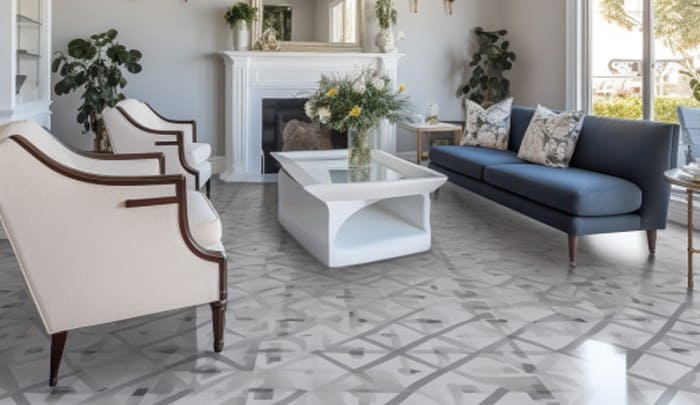
With proper installation and maintenance, vinyl flooring can last 10-20 years on average. This, of course, depends on factors such as the quality of materials and wear layer, usage, and proper maintenance practices. While this link refers to wood floors, many of the same principles apply to vinyl flooring care. In some cases, especially when it comes to longevity and durability, thicker planks or tiles with a scratch resistant and water resistant layer can be more resistant to wear and tear and thus extend the lifespan of your vinyl flooring. A clear example of signs that your vinyl floors may need replacing include peeling, cracking, tears, or discoloration.
“From my experience and studies done on various flooring materials, I can confidently say that vinyl flooring can last anywhere between 10 to 20 years, with proper care and maintenance. However, it’s crucial to understand that the lifespan of your vinyl flooring heavily relies on the quality of the material and the usage.”
Casper Vieno, Vinyl Floor Specialist
“The longevity of your vinyl floor is significantly influenced by the standards of its installation and care routine. If placed correctly by a skilled professional and consistently maintained appropriately, a vinyl floor can last well beyond the average expectancy. It’s essential to clean your floor using products that won’t harm the vinyl composition, and make it a habit to promptly address any visible damages. With my 30 years of experience in this industry, I assure the lifespan of vinyl floors can be prolonged considerably by just following these guidelines.”
Vernon Fisk, Vinyl Flooring Consultant
Understanding Vinyl Flooring
Vinyl flooring has become an increasingly popular choice for homeowners and businesses alike. Its versatility, affordability, and durability have made it a go-to option for many flooring projects. A case in point is its usage in high-traffic commercial spaces due to its resilience and sturdiness. Understanding the basics of vinyl flooring can help you make informed decisions when it comes to installation, maintenance, and deciding on its suitability and lifespan.
At its core, vinyl flooring is made from polyvinyl chloride (PVC) plastic. This unique ingredient provides it with excellent durability, and resistance to wear and tear. The manufacturing process involves layering PVC with additional materials like fiberglass or foam to enhance its strength and cushioning properties.
Think of vinyl flooring as a reliable bodyguard for your floors – it withstands a lot of daily foot traffic, is water resistant and protects against scratches and stains.
One key feature of vinyl flooring is its ease of installation. Unlike other flooring options that may require professional assistance, vinyl flooring can often be installed as a do-it-yourself project. It comes in various formats, including sheets, tiles, or planks, offering flexibility for different spaces and design preferences.
Vinyl flooring also offers a broad range of styles and designs to suit any aesthetic preference. Whether you prefer the look of hardwood, stone, or tile, there are vinyl options available that can convincingly mimic the appearance of these materials. Additionally, vinyl provides a soft underfoot feel with a degree of elasticity, making it comfortable to walk on.
Another advantage of vinyl flooring is its low maintenance requirements. Unlike hardwood or natural stone floors that may need periodic refinishing or sealing, vinyl is much more manageable. It only requires regular sweeping or vacuuming to remove dust and debris. Spills can be easily wiped clean with a damp mop and mild detergent. For a natural cleaning solution, you can even use vinegar to clean vinyl floors, which is both effective and eco-friendly.
Picture this: You’ve just finished hosting a lively dinner party at your home. As your guests depart, leaving behind crumbs and spills on your floor, you simply grab a mop and effortlessly eliminate any signs of the evening’s enjoyment. This is a prime example of vinyl flooring’s convenient clean-up process.
In terms of longevity, the lifespan of vinyl flooring can vary depending on various factors such as quality, installation, and maintenance. In many cases, with the right maintenance, it can last a lot longer than expected.On average, well-installed, fade-resistant vinyl floors can last anywhere from 10 to 20 years. Choosing high-quality vinyl materials and proper installation techniques can make your floors not only last longer but also look more elegant.
Now that we have a better understanding of vinyl flooring, including its quiet and comfortable nature underfoot, let’s explore the different types available and their unique characteristics.
Types of Vinyl Flooring
Vinyl flooring comes in different styles and formats to suit various needs and preferences. Understanding the different types will help you choose the most suitable, safe, and eco-friendly option for your specific requirements.
- Sheet Vinyl Flooring: This eco-friendly type of vinyl flooring comes in large, affordable rolls or sheets and is usually installed without seams (or with minimal seams). It provides a seamless look and can be an excellent choice for areas prone to moisture or heavy foot traffic, such as bathrooms or kitchens.
- Vinyl Tile Flooring: As the name suggests, this type of vinyl flooring mimics the appearance of ceramic or stone tiles. It consists of individual, fade-resistant tiles that can be easily installed using adhesive or a click-together system. Vinyl tile flooring, boasting an elegant design, offers versatility in design options and is an ideal choice for achieving a classic or contemporary look. However, if not maintained properly, vinyl floors can become dull and streaky, which is something to keep in mind when choosing this option.
- Vinyl Plank Flooring: Vinyl plank flooring is designed to replicate the look of hardwood planks. It often features realistic, luxurious wood grain patterns and textures. Vinyl planks come in various lengths and widths, allowing you to create customized patterns or install them in staggered arrangements for a more natural aesthetic.
- Luxury Vinyl Tile (LVT): Combining the affordable attributes of vinyl flooring with enhanced visual appeal and durability, LVT lives up to its luxurious designation. It typically features multiple layers including a wear layer, image layer, and backing layer. LVT offers a high level of realism in mimicking natural materials like wood or stone, while providing additional durability against scratches and stains, making it a safe choice for homes.
Think of the different fade-resistant, affordable types of vinyl flooring as different characters in a play – each brings its own unique and elegant elements to create a captivating and cohesive performance.
Benefits of Vinyl Flooring
Vinyl flooring has gained immense popularity in recent years due to its numerous benefits. Let’s explore some of the reasons that make it a preferred choice for homeowners.
First and foremost, vinyl flooring is known for its durable, safe characteristics. It can withstand heavy foot traffic, making it ideal for high-traffic areas like entryways, kitchens, and living rooms. Unlike other flooring options that may show signs of wear and tear over time, vinyl floors have a remarkable ability to resist scratches, stains, and dents. This durability factor ensures that your floors maintain their beauty and functionality for an extended period.
Another significant benefit is the ease of maintenance. The eco-friendly vinyl floors are relatively straightforward to clean and require minimal effort to keep them looking pristine. A regular sweeping or vacuuming followed by damp mopping with a mild cleaning solution is usually enough to keep the floors clean. This low-maintenance characteristic makes it an affordable, convenient choice for busy households or individuals who prefer hassle-free upkeep.
Additionally, vinyl flooring offers a wide array of design options. With advancements in printing technology, manufacturers can create quiet, elegant vinyl floors that mimic the appearance of natural materials like hardwood or stone, making them a luxurious yet affordable choice. If you’re considering hardwood-look vinyl, you might find it helpful to learn about how to decide between different hardwood floors, as many of these considerations also apply to hardwood-look vinyl.Whether you prefer the warm, comforting tones of wood or the sleek and modern look of tiles, there is a stunning array of vinyl flooring options to cater to every aesthetic preference. This vast selection presents an opportunity for people to bring their unique design visions into their homes. From mimicking the classic look of hardwood to adopting the futuristic vibes of metallic tiles, vinyl truly offers something for everyone.
Moreover, vinyl flooring is relatively comfortable underfoot due to its softness and certain degree of elasticity. Unlike harder surfaces such as tile or concrete, walking on vinyl floors feels cushioned and gentle. This feature makes it more comfortable for prolonged standing or walking, making it an ideal choice for high-traffic areas in homes, especially in places like the kitchen or bathroom.
Lastly, affordability plays a significant role in the appeal of vinyl flooring. When compared to other types of flooring materials like hardwood or ceramic tile, vinyl flooring tends to be more budget-friendly. The cost-effectiveness of vinyl allows homeowners to achieve the high-end looks they desire without overspending, making it an excellent choice for those on a tight budget or looking to strike a balance between style and functionality.
Lifespan of Vinyl Floors
One crucial aspect to consider when choosing any type of flooring is its lifespan. How long can you expect your vinyl floors to last? Much like the distressing signs of scuffs on an old pair of shoes, the wear and tear on your vinyl flooring over time can tell its own story.
The longevity of vinyl flooring depends on various factors, including the quality of the material, installation technique, level of maintenance, and environmental conditions. On average, well-maintained vinyl floors can last between 10 and 20 years. However, it’s essential to note that this estimate is not set in stone, with proper care and attention, your vinyl flooring can surpass its expected lifespan.
The quality of the vinyl flooring material purchased also plays a significant role in determining its lifespan. Higher-quality vinyl with thicker wear layers tends to be more durable and resistant to wear and tear. Thicker vinyl planks or tiles offer better protection against scratches, dents, scuffs, and fading – preserving the area of your home that sees the most traffic.
Furthermore, the installation process is critical in ensuring the longevity of your vinyl floors. Improper installation can lead to issues such as loose seams or gaps that may allow moisture or dirt to seep underneath the flooring, causing damage over time. It’s advisable to hire professional installers with experience in working with a variety of vinyl flooring options to ensure the best result.
Proper maintenance is another key factor that influences the lifespan of your vinyl floors. Regular cleaning using manufacturer-recommended products and methods helps preserve the integrity of the material and prevents any buildup of dirt or debris that could cause premature damage. Additionally, placing mats or rugs at entryways can help reduce the amount of dirt and grit that makes its way onto the floors – this small investment can add years to your floor’s lifespan.
Lastly, environmental conditions can impact the lifespan of vinyl flooring. Excessive exposure to direct sunlight can cause fading or discoloration, so it’s advisable to use window coverings or UV-protective films to minimize this effect. Additionally, temperature and humidity changes in different areas of your home can potentially damage vinyl floors, so ensuring a stable indoor environment is beneficial.
- When selecting vinyl flooring, it is important to consider its lifespan which can range from 10 to 20 years. The quality of the material, installation process, maintenance, and environmental conditions play a significant role in determining how long your vinyl floors will last. Higher-quality vinyl with thicker wear layers and proper installation can improve durability, while regular cleaning and placing mats or rugs at entryways can prevent premature damage. Additionally, minimizing exposure to direct sunlight and ensuring a stable indoor environment can extend the lifespan of your vinyl floors.
Factors Affecting Durability
When it comes to the durability of vinyl floors, several factors come into play. Understanding these factors will help you make informed decisions about your flooring choices and ensure that your investment lasts as long as possible.Before investing in vinyl flooring for your house, the first factor to consider is the quality of the vinyl flooring material itself. High-quality vinyl flooring is manufactured using robust materials and advanced technologies, making it more resistant to wear and tear, similar to the strength and durability that structure of a house offers. The reputation and work of the brand matter. On the other hand, lower-quality vinyl may not withstand the number of people moving about or daily use as effectively. Investing in a reputable brand and choosing a high-quality vinyl floor can significantly extend its lifespan, which often comes with added benefits such as warranties.
Additionally, vinyl flooring comes in varying thicknesses, and the thickness of the wear layer plays a crucial role in determining durability. The wear layer is the top protective coating of the vinyl floor that guards against scratches, stains, and fading. Thicker wear layers provide better resistance to everyday wear and tear, making them ideal for areas with high foot traffic or active households. If you’re after durability, thinner wear layers on the market might be more prone to damage and will require more frequent replacement.
Another factor influencing the durability of vinyl floors is proper installation. Even if you have chosen a high-quality product, improper installation can compromise its lifespan and performance. It’s like building a house; the work put into the foundation determines the structure’s strength.
Let’s delve into the impact of proper installation on the durability of vinyl floors.
Proper installation is crucial for maximizing the lifespan and performance of your vinyl flooring. It ensures that the planks are securely fitted together and properly adhered to the subfloor. By following recommended installation guidelines and employing professional installers if necessary, you can safeguard the warranties of the flooring material.
Impact of Proper Installation
One primary advantage of proper installation is enhanced stability. Vinyl floors installed correctly will have minimal movement or shifting, reducing the risk of damage caused by loose or uneven planks. This stability, much like the stability in a well-built house, also helps maintain the integrity of the locking mechanism between planks over time.
Moreover, proper installation minimizes the risk of moisture-related issues. Vinyl floors, especially luxury vinyl planks (LVP) or tiles (LVT), are waterproof by nature. However, if not installed correctly, moisture can seep through gaps or poorly sealed edges, leading to damage of the subfloor and potential mold growth. By ensuring a proper installation, you can mitigate these risks and provide a longer lifespan for your flooring.
Now that we’ve explored the factors affecting durability and the impact of proper installation, let’s move on to discuss maintenance strategies for longer-lasting vinyl floors. It’s quite like maintaining a house to ensure its market value.
Vinyl floors are known for their durability, but daily maintenance is essential, especially with more adults in the house, to ensure they reach their maximum lifespan. By implementing smart maintenance strategies, you can keep your vinyl floors looking beautiful and extend their longevity. Let’s explore some key strategies that can help you achieve this goal.
- With proper installation and maintenance, vinyl flooring can last between 10 to 20 years, according to the World Floor Covering Association.
- The quality of the vinyl flooring material affects its lifespan. Luxury Vinyl Tiles (LVT), a higher-end type of vinyl flooring, has shown to last up to 25 years when properly cared for.
- Certain types of vinyl flooring come with a wear layer that resists stains and extends its life span, however, studies found that these require occasional stripping and polishing for upkeep.
Maintenance Strategies for Longer-lasting Floors
One of the most crucial aspects of maintaining vinyl floors is regular cleaning. Daily or weekly sweeping or vacuuming helps remove loose dirt and debris that could potentially scratch the surface of the flooring. Using a soft-bristle broom or a vacuum cleaner with a hard floor setting can effectively pick up dirt without causing damage. In the long run, this simple work can help maintain the floor’s look and quality.
One of the most crucial aspects of maintaining vinyl floors is regular cleaning. Daily or weekly sweeping or vacuuming helps remove loose dirt and debris that could potentially scratch the surface of the flooring. Using a soft-bristle broom or a vacuum cleaner with a hard floor setting can effectively pick up dirt without causing damage.
Imagine you have a busy household with kids and pets constantly tracking in dirt and bringing in crumbs. Regularly sweeping the vinyl floors not only keeps them clean but also prevents small particles from accumulating over time and causing wear and tear.
In addition to regular cleaning, it is important to promptly clean up any spills or stains on your vinyl floors. Liquids left unattended for extended periods can seep into the seams or crevices of the flooring, leading to discoloration or mold growth. Use a damp cloth or mop with mild soap specifically formulated for vinyl floors to wipe away spills as soon as they occur.
Proper maintenance also involves protecting your vinyl floors from scratches and dents. Placing doormats at entryways can help collect dirt and debris before they get tracked onto the floor. Felt pads should be attached to the bottom of furniture legs to prevent scratches when moving them.
Think of caring for your vinyl floors as treating them like delicate artwork – you want to minimize potential damage by taking preventive measures and ensuring regular upkeep.
Furthermore, it is recommended to avoid using harsh chemicals or abrasive cleaners on vinyl floors as they can strip away the protective finish and cause permanent damage. Stick to manufacturer-recommended cleaning products or gentle cleansers specifically designed for vinyl floors. Regularly mopping with warm water and a mild vinyl floor cleaner can help maintain the shine and cleanliness of your floors.
Implementing these maintenance strategies will go a long way in preserving the beauty and longevity of your vinyl floors. By staying proactive and following these tips, you can enjoy stunning vinyl flooring that withstands the test of time.
Now that we understand the importance of maintenance, let’s dive into some specific care tips to keep your vinyl floors looking their best.
Vinyl Floor Care Tips
Vinyl floors are relatively easy to care for, but there are some specific tips that can help you maximize their lifespan and keep them in pristine condition. Let’s explore these care tips to ensure your vinyl floors remain beautiful for years to come.
Firstly, regular sweeping or vacuuming is essential to remove dirt and debris that can scratch the surface. However, it is important to note that not all vacuums are suitable for use on vinyl floors. Ensure you use a vacuum cleaner with a soft brush attachment or one specifically designed for hard floors to avoid any potential damage.
When it comes to mopping, avoid using excessive water as it can seep into the seams and edges of the vinyl flooring, causing damage. Instead, use a damp mop or a microfiber cloth mop with a mild vinyl floor cleaner. This method allows you to efficiently clean the floors without oversaturating them.
Spills should be promptly cleaned up to prevent staining or damage. If there are any stubborn stains, you can try using a mild cleaning solution specifically formulated for vinyl floors. Apply the solution directly to the stain, gently scrub with a soft cloth or sponge, and rinse thoroughly.
It’s important to note that while vinyl floors are durable, they can still be susceptible to scratches from sharp objects or furniture legs. To protect against this, consider placing felt pads on the bottom of furniture legs and regularly check for any sharp objects that may have come into contact with the floor.
By following these care tips, you can ensure your vinyl floors maintain their beauty and resilience. Regular maintenance and attention to detail will help your floors stand the test of time and continue to provide a stylish and functional foundation for your space.
Exploring Alternatives to Vinyl Flooring
While vinyl flooring offers numerous benefits such as durability and affordability, it’s essential to explore alternative options that may better suit your needs and preferences. Let’s take a look at some popular alternatives to vinyl flooring:
Hardwood Flooring
One of the most sought-after flooring options is hardwood. With its timeless appeal and natural beauty, hardwood floors can enhance the aesthetics of any space. They come in various types, including oak, maple, cherry, and walnut, each with its unique grain patterns and colors. Hardwood floors are known for their longevity and can last for generations if properly maintained. While they can be more expensive upfront compared to vinyl, hardwood floors add value to your home and create a warm and inviting atmosphere.
Laminate Flooring
If you desire the look of hardwood but have budget constraints, laminate flooring is an excellent alternative. It replicates the appearance of natural wood through a high-resolution image printed on a fiberboard core. Laminate flooring is highly versatile and can mimic various wood species, stone, or tile designs. The installation process is relatively simple, often utilizing click-and-lock systems that make it suitable for DIY projects. Additionally, laminate flooring is resistant to scratches, fading, and stains, making it a durable option for households with high foot traffic.
Ceramic Tile Flooring
For areas prone to moisture or humidity like kitchens or bathrooms, ceramic tile flooring is an ideal choice. With its waterproof properties and ability to withstand stains and spills, ceramic tiles provide long-lasting durability. They come in an array of colors and patterns, allowing you to create unique designs that reflect your personal style. Furthermore, ceramic tiles are easy to clean and hypoallergenic since they don’t harbor dust mites or allergens.
Engineered Wood Flooring
Engineered wood flooring combines the elegance of hardwood with enhanced stability. It consists of multiple layers bonded together under high heat and pressure. The top layer is genuine hardwood, while the lower layers are typically made of plywood or high-density fiberboard (HDF). Engineered wood flooring is less susceptible to expansion and contraction due to changes in temperature and humidity compared to solid hardwood. It offers similar aesthetics and durability as hardwood while being more resistant to warping and moisture.
Carpet Flooring
Carpet flooring provides a cozy and comfortable feel underfoot. It offers insulation, noise reduction, and warmth in colder climates. Carpet comes in various styles, such as cut pile, loop pile, or a combination of both. While it might not have the same long lifespan as vinyl or other hard flooring options, regular maintenance can extend its durability. However, carpet flooring may require more frequent cleaning compared to hard surfaces to prevent dust accumulation or allergen build-up.
When considering alternatives to vinyl flooring, it’s crucial to evaluate factors such as cost, durability, maintenance, and your personal aesthetic preferences. Each option has its unique benefits and considerations – weigh them according to your specific needs.
Whether you opt for the timeless appeal of hardwood, the affordability of laminate, the durability of ceramic tiles, the stability of engineered wood, or the comfort of carpet, exploring alternative flooring options allows you to find a solution that aligns with your lifestyle and enhances the beauty of your home.
What are the signs that indicate a vinyl floor needs to be replaced?
Some signs that indicate a vinyl floor needs to be replaced include visible wear and tear, significant discoloration or fading, persistent bubbling or peeling, and difficulty in cleaning stubborn stains. According to a study conducted by the Vinyl Institute, vinyl floors typically last between 10 to 20 years with proper maintenance. However, these signs may vary depending on the quality of the vinyl flooring and the level of foot traffic it receives.
Can vinyl floors be repaired if they start to deteriorate?
Absolutely! Vinyl floors can be repaired if they start to deteriorate. Small scratches and chips can easily be fixed by using a vinyl floor repair kit, which includes color-matching putty and a sealer. For larger damages, individual planks or tiles can be replaced without having to replace the entire floor. In fact, studies show that vinyl floors have an average lifespan of 20 years, but with proper maintenance and repairs, they can last even longer!
What factors determine the lifespan of a vinyl floor?
The lifespan of a vinyl floor is determined by several factors, including the quality of the material, the installation process, maintenance, and usage. High-quality vinyl floors that are properly installed can last up to 20 years or more, while lower quality floors may only have a life expectancy of 5-10 years. Regular cleaning and avoiding harsh chemicals can help prolong the life of the floor. Additionally, proper usage, such as avoiding dragging heavy objects or wearing high heels, plays a role in preventing damage and ensuring longevity.
Are there different types of vinyl flooring with varying lifespans?
Yes, there are different types of vinyl flooring with varying lifespans. Luxury vinyl tile (LVT) and sheet vinyl are typically more durable and have longer lifespans compared to standard vinyl flooring. LVT can last up to 20 years or more, while sheet vinyl generally has a lifespan of 10-20 years. These numbers can vary depending on maintenance, foot traffic, and other factors. Proper installation, regular cleaning, and maintenance can significantly extend the lifespan of vinyl floors.
Are there any maintenance tips to extend the life of vinyl floors?
Yes, there are maintenance tips that can help extend the life of vinyl floors. First, regularly sweep or vacuum the floor to remove dirt and debris that can scratch the surface. Second, wipe up spills immediately to prevent stains. Third, avoid using harsh chemicals or abrasive cleaners that can damage the vinyl. Finally, place mats or rugs in high traffic areas and use furniture pads to prevent scratches. According to a study by the Vinyl Institute, regular maintenance can increase the lifespan of vinyl floors by up to 10 years.

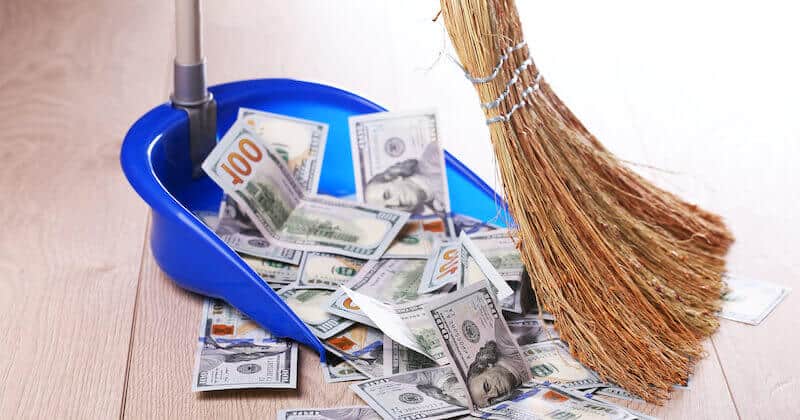
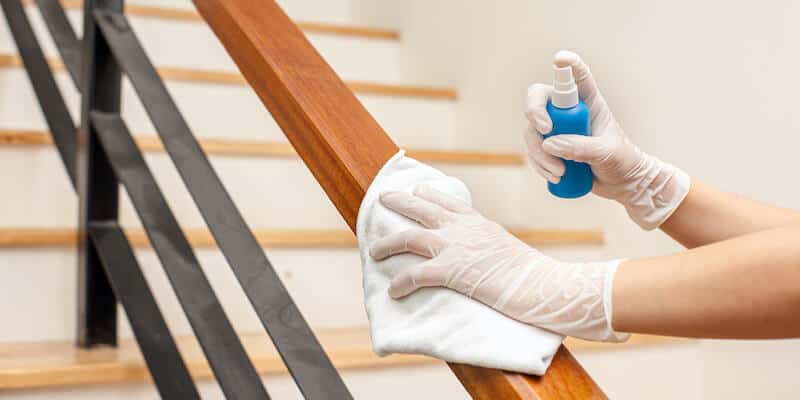
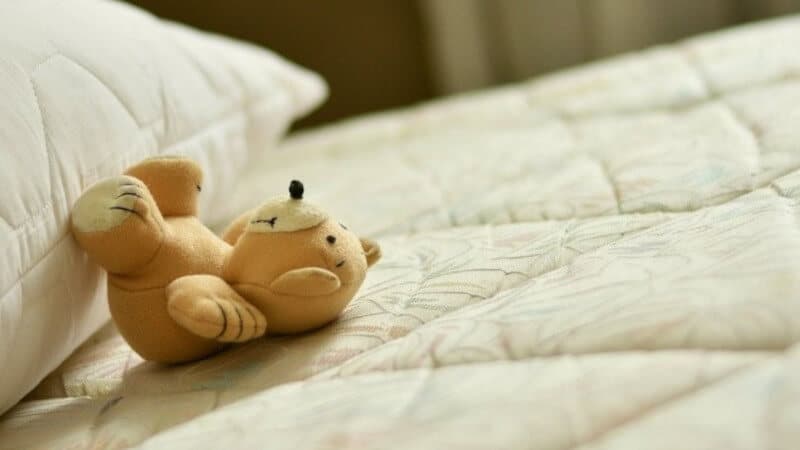
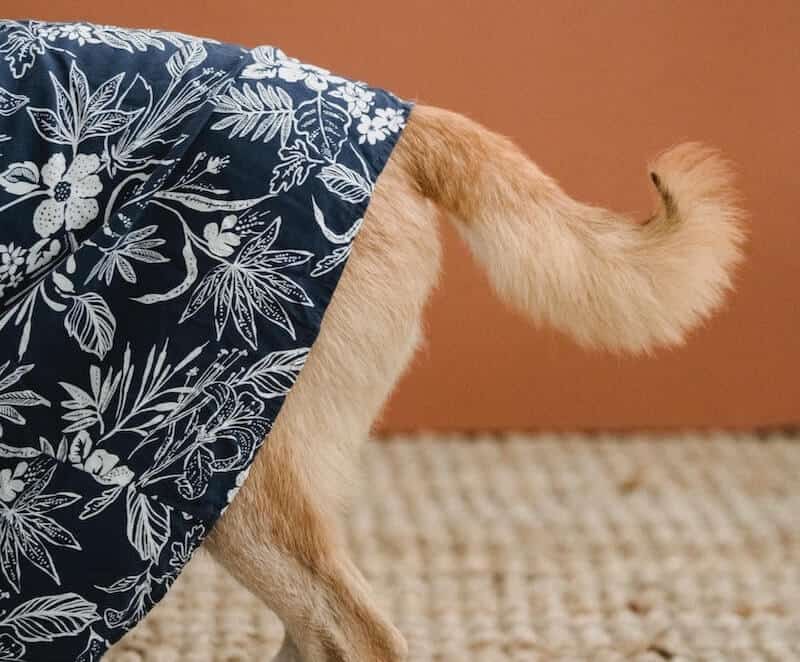
As an interior designer with a decade and a half of experience, I’ve seen many flooring trends come and go but vinyl sustained. Probably, for its durability and aesthetic appeal. Today, I recommend vinyl flooring to many clients for its endurance, ease of maintenance, and range of design options.
As an appraiser, I’ve appreciated vinyl for its durability and impact on home value. But it’s also important to mention that well-chosen and well-maintained vinyl can often outlast more traditional wood floors in high-traffic areas.
As a project manager, I’ve seen plenty of vinyl floors installed during my career. It’s a great option for homeowners who are looking for an affordable and durable flooring option. I remember working on a tight budget renovation where we went for vinyl flooring. Despite heavy foot traffic and minimal upkeep, the floors are still in good nick even after ten years.
As someone who’s considering vinyl flooring for the first time, I’m wondering what the initial challenges or complications people typically face in their first installation attempt? Also, would it be wiser to hire a professional or can an amateur tackle this undertaking efficiently? What are some of your thoughts on pre-installation needs and steps like cleaning, leveling, and moisture testing?
Your concern is completely reasonable Zephyr! In my personal experience, the initial complications that first-timers might face include not properly preparing the subfloor, which includes cleaning, leveling, and moisture testing as you mentioned. While an amateur can indeed handle vinyl installation, I’d recommend hiring a professional if it’s your first time or practicing with smaller rooms before taking on larger areas.
I agree with Killian’s sentiments about hiring professionals, especially for larger areas. In my attempt to DIY vinyl flooring for my entire house, I underestimated the detailing that goes into the subfloor preparation. Despite being a seasoned DIYer, it proved a lot more challenging than expected and took much longer to install.
I can relate to your experience, Garfield Tucker. Detailing the subfloor when DIY installing vinyl flooring is indeed one of the most challenging parts, and it’s too often overlooked by enthusiastic handypersons without proper know-how. It just goes to show you that no matter how handy we are, there’s always something new to learn when tackling unfamiliar tasks.
Working on vinyl floors for the last 20 years, I’ve observed that their lifespan is majorly determined by the quality of initial installation and ongoing maintenance. I’ve seen vinyl floors that last barely a decade due to poor installation and equally those that are well over 25-30 years old but still look great thanks to good installation techniques accompanied by regular upkeep. It’s just like keeping a vintage car running – it requires knowledge, skill, and above all, consistency. After all, your floor’s life isn’t measured in years alone but also in the quality of those years.